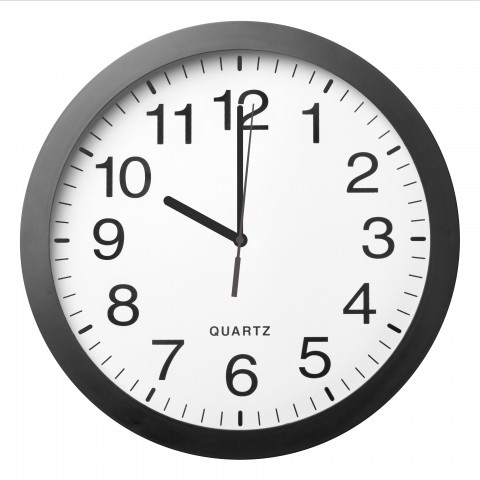
Grammar is critical to every language—it is the needle that sews the bits and pieces of a language together. As a language learner, understanding the grammar will help you better express yourself and communicate with others in your target language.
Cantonese has its own (relatively simple!) grammar rules. It’s vital to learn basic Cantonese grammar if you want to master this interesting language in full. You need to know the right words and sentence structure to speak fluent Cantonese and effectively communicate with native speakers.
Read on and learn about the most important Cantonese grammar rules!
- → Also keep in mind that we offer several other Cantonese grammar lessons on our website that go into much more detail. If you’re thirsty for more knowledge, make sure to check them out!
 Table of Contents
Table of Contents
- General Principle – Simple is Best!
- Basic Sentence Structure
- Final Particles
- Cantonese Tenses
- Cantonese Negation
- Why is CantoneseClass101 Great for Learning Cantonese?
1. General Principle – Simple is Best!

Cantonese is straightforward!
Cantonese grammar rules are much simpler than those of many other languages. For example, we do not have tenses (past, present, future, etc.) like English does, nor do we have grammatical gender like French does. We don’t have conjugations, honorifics, nor syllabary changes either.
Also, we like to get straight to the point when expressing ourselves. Take “Would you mind going to the store?” as an example:
- A native Cantonese speaker would ask with: 你去士多?
- Romanization: nei5 heoi3 si6 do1
- Literal translation of 你去士多: You go store?
- Meaning: Would you mind going to the store?
2. Basic Sentence Structure

Cantonese has the same basic sentence structure as English: subject (S), verb (V), and object (O).
To illustrate the SVO format, take the English sentence “I watch a movie,” as an example. We can see that the subject “I” is presented first. This is followed by the verb “watch.” Finally, the object “a movie” is positioned last.
Now let’s compare the same sentence with the Cantonese translation: 我睇戲 (ngo5 tai2 hei3). If we break down the Cantonese sentence, we see that the subject 我 (ngo5), meaning “I,” comes first. Then comes the verb 睇 (tai2), meaning “watch.” And finally, we have the object 戲 (hei3), meaning “movie.”
Below is a summary of the SVO word order in Cantonese:
- Chinese Characters: 我睇戲。
- Romanization: ngo5 tai2 hei3
- Meaning: I watch (a) movie.
Let’s see one more example sentence in the SVO format:
- Chinese Characters: 我影相。
- Romanization: ngo5 jing2 soeng2
- Meaning: I take photos.
Do you want more information on this topic? Then see our article on The 10 Most Useful Cantonese Sentence Patterns and learn how to communicate like a native!
3. Final Particles

When looking at the essentials of Cantonese grammar, particles cannot be ignored. They play a huge role in the language!
Final particles are placed at the end of a sentence to indicate the mood or attitude of the speaker, and to make the speech more colloquial.
Final particles are most common in Cantonese and Mandarin, but they’re also present in Japanese and many other East Asian languages such as Thai.
Cantonese speakers love to add final particles to their sentences! Let’s take a look at the examples below:
Example particle 1: 嘅
Romanization: ge3
Function / Indication: Indicates humbleness or understanding; emphasis on raising a fact in a subtle way
Example Sentence
- Chinese Characters: 唔係是必要你講嘅。
- Romanization: m4 hai6 si6 bit1 jiu3 nei5 gong2 ge3
- Meaning: You are not obliged to say anything unless you wish to do so.
Example particle 2: 呀
Romanization: aa3
Function / Indication: Indicates enthusiasm and friendliness (usually in a softer tone), or a sarcastic retort
Example Sentence
- Chinese Characters: 係我呀。
- Romanization: hai6 ngo5 aa3
- Meaning: It’s me.
Example particle 3: 喇
Romanization: laa3
Function / Indication: Indicates an exclamation with an emphasis on the past; “already”
Example Sentence
- Chinese Characters: 佢返咗屋企喇。
- Romanization: keoi5 faan2 zo2 uk1 kei2 laa3
- Meaning: He already got back home.
Example particle 4: 呢
Romanization: ne1
Function / Indication: Used in questions to soften the tone when inquiring about facts
Example Sentence
- Chinese Characters: 飛機機艙到底幾耐清潔一次呢?
- Romanization: fei1 gei1 gei1 cong1 dou3 dai2 gei2 noi6 cing1 git3 jat1 ci3 ne1
- Meaning: How often would the cabin of a plane be cleaned?
Example particle 5: 之嘛
Romanization: zi1 maa3
Function / Indication: “only”
Example Sentence
- Chinese Characters: 污糟咗之嘛。
- Romanization: wu1 zou1 zo2 zi1 maa3
- Meaning: It (only) got dirty.
Example particle 6: 咋
Romanization: zaa3
Function / Indication: Indicates disapproval; “just”
Example Sentence
- Chinese Characters: 係因為未見過咋。
- Romanization: hai6 jan1 wai6 mei6 gin3 gwo3 zaa3
- Meaning: It’s (just) because this has never been seen.
4. Cantonese Tenses

There are no such concepts as tenses or verb conjugation in Cantonese. Instead, we use additional words to indicate the time of an incident when necessary.
It’s not mandatory to include these additional words as we can usually tell whether an event happened in the past, present, or future from the context.
Let’s take a look at some common additional words:
Indicating “the past”:
- Placed after the verb to indicate the past:
- 咗 (zo2) – have done
- 過 (gwo3) – tried
- 完 (jyun4) – did
- 曬 (saai3) – completed
- Placed at the beginning of a sentence or right after the subject:
- 啱啱 (aam1 aam1) – just now
- 頭先 (tau4 sin1) – a moment ago
- 前排 (cin4 paai2) – a while back
- 幾個禮拜之前 (gei2 go3 lai5 baai3 zi1 cin4) – a few weeks ago
- 上個月 (soeng6 go3 jyut6) – last month
- 舊年 (gau6 nin2) – last year
Indicating “the present” / “present continuous”:
- Placed before the verb to indicate the present:
- 喺度 (hai2 dou6) – be / doing
- Placed after the verb to indicate the present:
- 緊 (gan2) – in progress
- 住 (zyu3) – doing
- Placed at the beginning of a sentence or right after the subject:
- 而家 (ji4 gaa1) – now
Indicating “the future”:
- Placed before the verb to indicate the future:
- 會 (wui5) – will
- Placed at the beginning of a sentence or right after the subject:
- 到時 (dou3 si4) – then
- 陣間 (zan6 gaan1) – later
- 跟住 (gan1 zyu6) – and then
- 之後 (zi1 hau6) – after
- 聽日 (ting1 jat6) – tomorrow
- 後日 (hau6 jat6) – the day after tomorrow
- 下個禮拜 (haa6 go3 lai5 baai3) – next week
- 下個月 (haa6 go3 jyut6) – next month
- 出年 (ceot1 nin2) – next year
We’ll be introducing this topic in more detail soon—stay tuned!
5. Cantonese Negation

Let’s cover one more basic Cantonese grammar element: negation.
Cantonese negation is quite simple, depending on the context (that is, whether you’re referring to the past, present, or future). There are four main ways to negate a sentence.
Negating the past
There are two patterns for negating the past in Cantonese:
| Example | |
| 未 (mei6) + verb + 過 (gwo3) | 我未去過英國。 ngo5 mei6 heoi3 gwo3 jing1 gwok3 I have never been to the UK. |
| 冇 (mou5) + verb | 我冇食嘢。 ngo5 mou5 sik6 je5 I didn’t eat anything. |
Negating the present
Here is the pattern for negating the present in Cantonese:
| Example | |
| 唔 (m4) + verb | 我唔識講普通話。 ngo5 m4 sik1 gong2 pou2 tung1 waa2 I don’t know how to speak Mandarin. |
Negating the future
Finally, here is how to negate the future:
| Example | |
| 唔會 (m4 wui5) + verb | 我唔會去。 ngo5 m4 wui5 heoi3 I am not going. |
We’ll be discussing Cantonese negation soon. Stay tuned at CantoneseClass101.com!
6. Why is CantoneseClass101 Great for Learning Cantonese?

Now that you’ve learned some basic Cantonese grammar rules (and see how simple they are!), are you ready to officially embark on your Cantonese learning journey?
With CantoneseClass101.com, you can have your daily dose of Cantonese whenever and wherever you want, through mobile apps, desktop software, and our website. We offer entertaining, engaging, and effective lessons on various aspects of the Cantonese language and culture.
Until now, we’ve delivered more than 750,000,000 lessons to thousands of happy students from all around the globe. You can learn Cantonese with over 1060 audio and video lessons delivered by our knowledgeable and energetic hosts, detailed PDF lesson notes, an abundance of vocabulary learning tools, spaced repetition flashcards, and a lively community where you can discuss the lessons with fellow learners. What are you waiting for? Download our lessons, enjoy our audio and video files, and start learning now!
And keep in mind that if you prefer a one-on-one learning approach and want to further accelerate your Cantonese learning, you can take advantage of our MyTeacher program!
Know that your hard work will pay off, and before you know it, you’ll be speaking Cantonese like a native!










